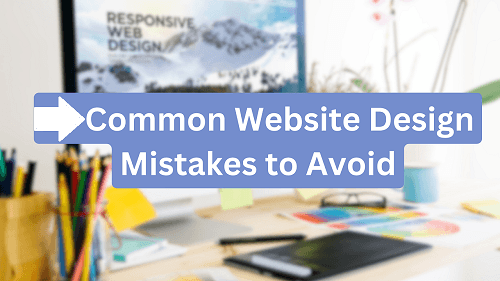Your online portfolio is more than just a showcase of your work—it’s a tool for conversion in 2025. A well-designed portfolio website design can develop credibility, build trust, and ultimately convert visitors into paying clients. With design trends and user behaviors constantly changing, staying ahead of the curve is essential to create a website that connects with your audience.
Your portfolio website is your digital storefront. In 2025, where online presence often determines business success, your portfolio website design must do more than look good—it must convert. Whether you’re a freelancer, creative professional, or business owner, an optimized portfolio website can develop credibility, attract clients, and drive growth.
In this article, we’ll uncover the secrets to creating a portfolio website that not only looks stunning and connects with your audience. But also drives client engagement and boosts your business success.
Table of Contents
Why Portfolio Website Design Matters
A portfolio website is more than just a collection of your work. It’s a strategic tool that communicates your expertise and builds trust. Effective portfolio website design is essential for showcasing your skills, building credibility, and attracting the right clients. A well-designed portfolio creates a strong first impression and highlights your expertise through organized visuals and compelling content. It serves as a platform to differentiate yourself in a competitive market, demonstrating professionalism and attention to detail.
By matching the design with your target audience’s needs, you can create a user-friendly experience that drives engagement and inquiries, making your portfolio a powerful tool for personal or business growth. Here’s why portfolio website design matters:
Building Credibility:
A professional design signals reliability and competence, making potential clients more likely to trust you. A portfolio website showcases your work in an organized and visually pleasing way, helping to develop trust and credibility with potential clients or employers. A polished design reflects your attention to detail and professionalism.
Attracting the Right Clients:
When designed thoughtfully, your portfolio can filter out irrelevant leads and attract clients that match with your services. An effective portfolio website is customized to your target audience. By highlighting your niche and presenting relevant projects, it helps to attract clients.
Showcasing Your Expertise:
Your portfolio highlights what you bring to the table, helping clients envision how you can solve their problems. A portfolio is more than just a collection of work; it’s a platform to demonstrate your skills, creativity, and unique approach. A well-thought-out design highlights your strengths and communicates your value effectively.
Investing in a strong portfolio website design ensures that you stand out in a competitive market, leaving a memorable impression and drawing the right opportunities to grow your career or business.
Key Elements of a High-Converting Portfolio Website

A high-converting portfolio website is more than just a showcase of work—it’s a strategic tool for attracting clients and driving action. Here are the key elements that make a portfolio website stand out:
Clear Navigation:
Ensure your website is easy to navigate with simple menus and a logical layout that guides users to key sections. Simplified, simple navigation ensures visitors can easily find your work, learn about your services, and contact you without frustration. A clean menu structure is crucial for keeping users engaged.
Strong Visuals and Branding:
Eye-catching visuals paired with consistent branding elements create a memorable impression. High-quality images, consistent fonts, and a color scheme matched with your personal or professional brand support credibility and professionalism.
Compelling Calls-to-Action (CTAs):
Encourage clients to take the next step with clear and actionable CTAs, like “Contact Me” or “View Services.” Strategically placed CTAs guide visitors toward desired actions, such as inquiring about services, downloading your resume, or booking a consultation. They should be clear, direct, and visually prominent.
By incorporating these elements, a well-designed portfolio website not only captivates visitors but also converts them into loyal clients or collaborators.
Design Trends for Portfolio Websites in 2025
Staying ahead in portfolio website requires embracing modern trends that captivate audiences. Portfolio website design continues to change with trends focusing on user experience, engagement, and accessibility in 2025. Key trends include:
Minimalism and White Space:
Clean, uncluttered designs with ample white space focus attention on your work and message. Minimalism not only improves the visual impact but also makes navigation straightforward and engaging.
Interactive and Dynamic Elements:
Features like scroll-triggered animations, hover effects, and interactive galleries create a more improve the browsing experience. These dynamic elements help keep visitors engaged while highlighting your creativity.
Mobile-Friendly Design:
With mobile browsing dominating, responsive and mobile-friendly design is essential. Ensuring your portfolio looks and functions seamlessly on all devices is critical for reaching a wider audience and retaining visitors.
These trends ensure that portfolio websites in 2025 are not only visually pleasing. But also effective in showcasing work and converting visitors into clients.
Understanding Your Target Audience
To design a high-converting portfolio, you must first understand your audience. A successful Portfolio Website Design starts with a deep understanding of your target audience. Customizing your website to match with client expectations ensures it connects with their preferences and needs.
Customizing Design to Client Expectations:
A well-created design reflects the style, tone, and professionalism that your ideal clients look. Whether it’s a sleek, modern layout for tech-savvy audiences or a classic, elegant design for traditional industries, customizing your website design strengthens your impact.
Identifying Problem Area and Addressing Them:
By understanding the challenges your audience faces, you can showcase solutions through your portfolio. For example, highlighting specific projects that solve common problems helps build trust and credibility.
Responding to your audience’s preferences and problem areas ensures your portfolio website delivers a meaningful and engaging experience.
Creating Engaging Content for Your Portfolio Website
Content is just as important as design. Engaging content is the cornerstone of effective portfolio website design. Storytelling through your projects allows potential clients to connect with your work on a personal level, demonstrating your expertise and the value you bring. Pairing strong visuals with concise textual content strikes the perfect balance, ensuring visitors stay captivated without feeling overwhelmed. Include detailed project descriptions, client testimonials, and case studies to establish credibility and trust. Highlight your unique approach and successes while maintaining a clear and professional tone. Engaging content not only showcases your skills but also drives conversions by resonating with your target audience.
Storytelling through Your Projects:
Showcase your work by telling effective stories behind each project. Explain the challenges faced, the innovative solutions implemented, and the impact achieved. Storytelling adds a human touch and creates a connection with potential clients.
Balancing Visuals with Textual Content:
Striking the right balance between stunning visuals and brief, informative text is essential. High-quality images, videos, and animations can highlight your expertise, while well-written descriptions provide context and depth to your work.
By blending storytelling and balanced content, your portfolio website can effectively communicate your skills and attract the right audience.
Optimizing Your Portfolio for Mobile Devices
Mobile optimization is crucial for effective portfolio website design in today’s on-the-go digital world. A comfortable user experience is provided by responsive design, which ensures that your portfolio adjusts for different screen sizes with easily. Give priority to fast load times because mobile users are expecting access to content quickly. Additionally, cross-device compatibility testing helps guarantee that your website performs flawlessly across smartphones, tablets, and desktops. A mobile-friendly portfolio not only improves user satisfaction but also boosts your search engine rankings, making it an essential element of modern website design.
Responsive Design Essentials:
Responsive design ensures that your portfolio adjusts smoothly to different screen sizes, whether on a smartphone, tablet, or desktop. This includes fluid layouts, scalable images, and flexible grids that adjust based on the user’s device. An essential element of responsive design is using media queries that customize the content to the device’s screen resolution.
Testing for Cross-Device Compatibility:
It’s crucial to test your portfolio across various devices and browsers to ensure compatibility. This means checking how your portfolio displays on different screen sizes, operating systems, and browsers to guarantee that it offers a consistent and quality experience for all users. Testing tools like BrowserStack or Google’s Mobile-Friendly Test can help spot potential issues.
By focusing on these elements, you can create a Portfolio Website Design that provides an optimal viewing experience. This ensuring that potential clients can easily navigate and engage with your content regardless of the device they use.
SEO Best Practices for Portfolio Website Design
Implementing SEO best practices is essential for effective portfolio website design to ensure your work reaches the right audience. Strategically use relevant keywords throughout your website to improve search engine visibility. Optimize images by compressing file sizes and using descriptive alt text to improve website speed and accessibility. Ensure your website has fast loading times and a mobile-friendly design to match with search engine preferences and improve user experience.
Additionally, create high-quality, engaging content such as blogs or case studies to increase website traffic and develop authority in your field. By following these practices, you’ll attract more visitors and convert them into valuable clients.
Using Keywords Strategically:
Identify relevant keywords related to your industry and expertise, and integrate them naturally into your website’s content, titles, Meta descriptions, and headers. For example, if you’re a graphic designer, phrases like “creative design portfolio” or “freelance design services” can help target your audience effectively without overloading the text.
Optimizing Images and Website Speed:
High-quality visuals are essential for portfolios but can negatively affect website loading times if not optimized. Compress images using tools like TinyPNG or Photoshop without compromising quality. Additionally, use browser caching, minimize JavaScript, and utilize a Content Delivery Network (CDN) to improve speed and performance. Faster websites not only improve user experience but also rank better on search engines.
By following these SEO best practices, your Portfolio Website Design can achieve higher rankings while ensuring an exceptional experience for visitors. It making easier for clients to discover and connect with you.
The Role of Testimonials and Case Studies
Integrating testimonials and case studies into your Portfolio Website Design is a powerful way to build credibility and convert visitors into clients. These elements showcase the value of your work and develop trust with potential customers.
Building Trust with Client Reviews:
Testimonials act as social proof, demonstrating your expertise through the experiences of satisfied clients. Featuring authentic, detailed reviews alongside client names and photos (if permitted) adds transparency and relatability, making your services more pleasing.
Structuring Case Studies to Highlight Results:
Case studies go beyond testimonials by providing a detailed narrative of your work process and the measurable results achieved. An effective case study should outline the client’s challenges, your approach to solving them, and the final results, supported by metrics or visuals. This not only highlights your skills but also helps prospective clients envision the value you bring to their projects.
By using testimonials and case studies, your Portfolio Website Design becomes an effective tool to build trust, showcase results, and attract new opportunities.

Common Mistakes to Avoid
When creating an effective Portfolio Website Design, avoiding common mistakes ensures your website achieves its goals of showcasing work and converting visitors into clients. Here are two key mistakes to stay clear of:
Overloading the Design with Unnecessary Features:
Adding too many flashy elements, animations, or irrelevant content can overwhelm visitors and detract from the core message. A cluttered design makes it harder for users to focus on your work, ultimately reducing engagement. Opt for a clean, streamlined design that highlights your portfolio’s strengths without distractions.
Failing to Guide Visitors toward a CTA:
Every portfolio should have a clear call-to-action (CTA), such as “Contact Me,” “Request a Quote,” or “View More Projects.” Without a simple pathway guiding visitors toward these actions, you risk losing potential clients. Ensure CTAs are strategically placed, visually distinct, and easy to follow.
Avoiding these mistakes in your Portfolio Website Design will create a user-friendly experience that effectively showcases your expertise and drives meaningful client interactions.
Tools and Resources for Portfolio Website Design

Creating an exceptional Portfolio Website Design requires using the right tools and resources. These enable you to design, optimize, and track your website’s performance effectively. Here are two critical categories to focus on:
Website Builders and Design Tools:
Platforms like Squarespace, Wix, and WordPress provide simple drag-and-drop interfaces for creating visually pleasing portfolio websites. For custom designs, tools like Figma or Adobe XD allow for precise prototyping and layout customization. These tools empower you to highlight your work while maintaining a professional aesthetic.
Analytics and Performance Tracking:
Tools such as Google Analytics and Hotjar provide insights into user behavior, allowing you to measure engagement, bounce rates, and conversion metrics. Performance tools like GTmetrix or PageSpeed Insights help optimize website speed and user experience. This ensuring your portfolio remains accessible and pleasing across all devices.
By utilizing these resources, you can streamline the Portfolio Website Design process and ensure your website effectively showcases your expertise while driving meaningful client interactions.
FAQs
Q- What is the best platform for creating a portfolio website?
Platforms like WordPress, Wix, and uniquewebonline.com are popular for their versatility and ease of use.
Q- How can I make my portfolio stand out?
Focus on unique design elements, high-quality visuals, and effective storytelling.
Q- Do I need coding skills to create a portfolio website?
No, many platforms offer drag-and-drop builders that require no coding knowledge.
Q- How often should I update my portfolio?
Regular updates ensure your portfolio reflects your latest work and remains relevant.
Q- What metrics should I track to measure success?
Monitor bounce rates, conversion rates, and user engagement to evaluate your portfolio’s performance.
Conclusion
An effective portfolio website design is crucial for attracting and converting clients in 2025. By implementing clear navigation, mobile-friendly layouts, engaging content, and strategic SEO practices, you can create a website that not only showcases your talents but also drives client engagement. Incorporating testimonials, case studies, and effective CTAs builds trust and drives action, while using design tools and analytics ensures continuous optimization.
As client expectations change, a well-designed portfolio website becomes the ultimate tool for showcasing your expertise and connecting with the right audience. Stay ahead of trends, understand your audience, and continuously optimize your website. Start creating your portfolio today to secure long-term success and stay ahead of the curve in 2025.
If you enjoyed this article about the Portfolio Website Design, share your thoughts in the comments below! Please visit www.uniqueincs.com for more valuable content and claim your free e-book. Plus, explore discounted Digital Marketing Products to boost your business!
Improve your digital presence with an innovative website design that seamlessly integrates style and utility. Connect with www.uniquewebonline.com, using the most current trends and technologies to create visually pleasing and user-centric websites customized to increase your brand. Always prepared to captivate your audience and make a lasting impression, Unique Web Online invites you to create a digital experience that distinguishes you. Explore our portfolio and get started on the path to a striking, responsive, and effective website today.

